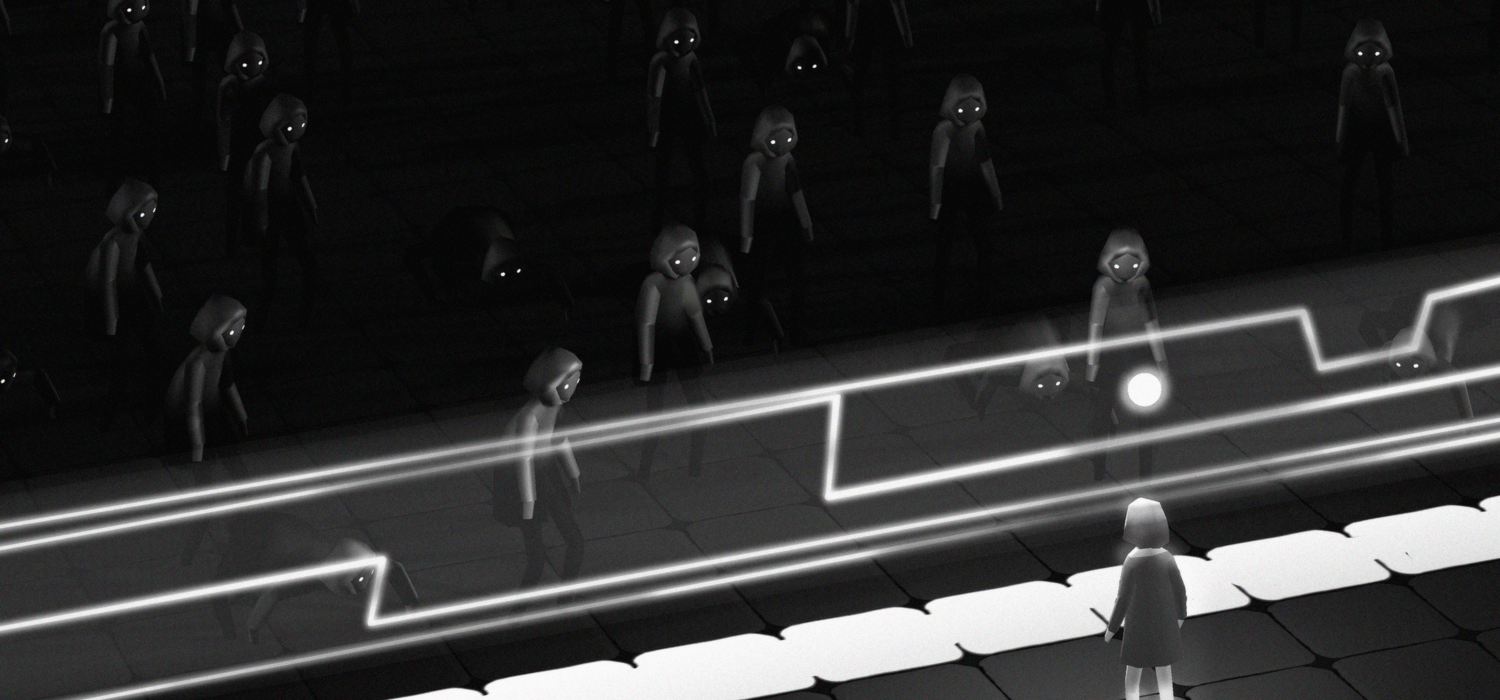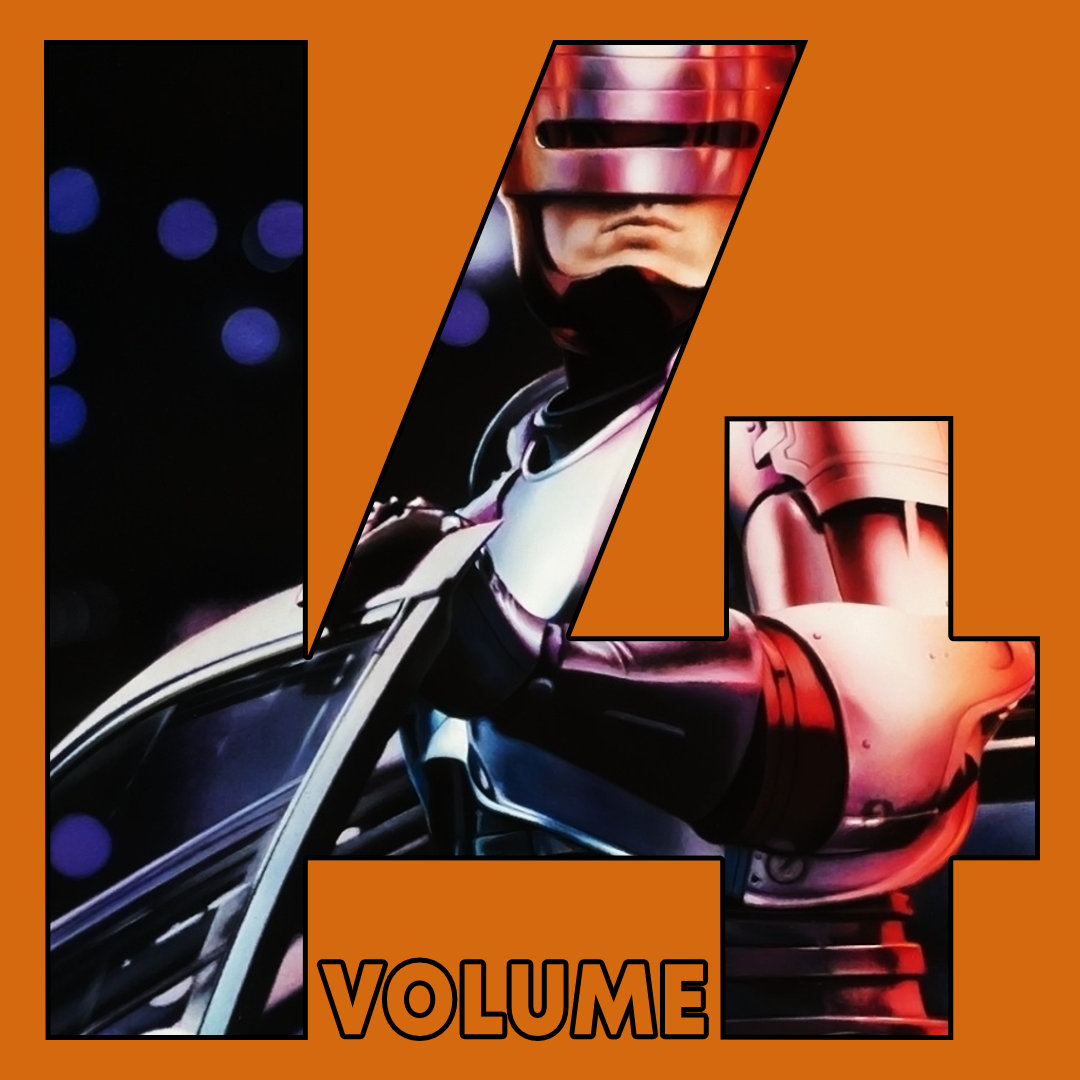Our Brian riddles his way through the monochrome dark and light of 4L Games’ moody puzzler, FRACTER
Descending into a mysterious and dark world, guided by an ethereal floating light, our nameless protagonist enters the void.
A shadow herself, she sees mirror images of herself bathed in light roaming the chasm. It is up to her to make sense of where she is, and to find a way out.
FRACTER, by 4L Games, is a third person puzzle game that has you descending into mysterious polygonal dungeons that each hold a series of challenges.

As the player, I was not given a narrative backstory as to how I ended up here, but rather I was presented with poetry explaining that I was to attempt to escape and make sense of the world around me. What I found in these depths was a world of mystery, satisfying puzzles, and more questions than answers.
Guided by a floating light orb, FRACTER begins by going into a mysterious dark area without knowing your purpose. You are told to follow the light and you do, the light leading you on a chase through an unknown passage.
The visuals in FRACTER are simple and beautiful, using a great black and white palette to bring life to a very dim world. Taking control of the character, you chase down these passages trying to collect white light versions of your own silhouette. Collecting these silhouettes turned out to be optional, but the game didn’t tell me that so I set out and collected all of them during my playthrough. I was never told why I was chasing these versions of myself, but I didn’t really feel the need to know. They were there, so I got them. And this highlights both what I loved and didn’t love about FRACTER; it all felt a little aimless.
The game is split up into seven areas that I will refer to as voids, each containing a different set of puzzles. Puzzles are themed by each void. In one void I was tasked with a puzzle activating several switches using light beacons where in another I was tasked with raising and lowering platforms to allow a block to be pushed from one end of a room to the other. These are puzzle types that feel familiar to those of us who have played other puzzle games.

Most of us have played games that involve pushing a block onto a switch in order to activate a door, and this game doesn’t push the envelope with any of these puzzle designs. However, it does provide a consistent challenge and ramps up difficulty in a satisfying way.
In one of the voids I was tasked with raising and lowering platforms to make my path ahead. The first few puzzles were straightforward but by the end of the void I was struggling to come up with a solution to a complicated series of puzzles. The progression of these puzzles feels both fair and challenging, a balance that I find is difficult to strike in games like these.
The last void involved running a gauntlet that included all different types of puzzles that I encountered throughout the game. I found this last level to be the most satisfying because it is where I felt the most untethered and left to my own devices. The series of engaging and challenging puzzles leading up to the end were a ton of fun to take on and made for a fitting conclusion.
Common obstacles found in the game were chasms, maze-like sections, and one type of enemy. This enemy was a grey humanoid shape that shuffled along like a zombie and it is the only enemy type that I encountered through the game. At first, I didn’t know if they were friendly or not so I approached them. The zombie instantly turned and charged me. The manner in which this enemy moves is just bizarre, folding its limbs to the ground and approaching you in a spider like fashion. Simply put, they were creepy as hell and filled me with a sense of dread every time I saw them. Aside from these things, there were no other obstacles except for the puzzles themselves.
So I kept going. Kept clearing voids. Kept collecting these silhouettes. When each void was cleared, I was shown another series of words. I called them poems as I saw them but I’m not quite sure if that’s what they are. Each stanza that preceded a void gave hints as to what types of puzzles one would see and they hinted at a greater meaning above it all. So, I assumed that as I kept progressing that these poems would shed some light as to who I was or why I was doing what I was doing. Except they never quite got there. The words kept appearing, they kept prodding me forward, suggesting that I carry on, but they never said why.
Some of the lines written are beautiful and I have assigned my own meaning to some of them. Some spoke to the nature of darkness. Some spoke to the process of overcoming obstacles. There were some I could apply to my own life, but there were almost none I could apply to the game.
Then it ended. And I was satisfied, I think. I thought the puzzles were great, the last level being the highlight of the bunch. That run up to the end was just fun to play and I felt like I truly had a handle on all of the systems. It was a fitting conclusion from a gameplay perspective.

The issue I had was that the narrative just didn’t fit. I think that it’s fair to say that there was almost no narrative. On its face, that’s completely fine, but I couldn’t help feel a bit disappointed that these inspirational and haunting quotes led to nothing. I was left in a bit of a void myself, wondering what exactly the developers were trying to tell me.
That’s cool though. Not every game has to punch you in the face with its message. Not every game is a Death Stranding, swinging metaphors and hurling existential meaning at us.
FRACTER is a completely serviceable puzzle game that I enjoyed quite a bit. It took me about two and a half hours to see it through and, for the current price of $6.99 (or your local equivalent), I think it’s quite worth it. Even though it ended up having a lack of narrative substance, I still found it to be a satisfying puzzle experience.
Review code for Nintendo Switch was provided by PR.













